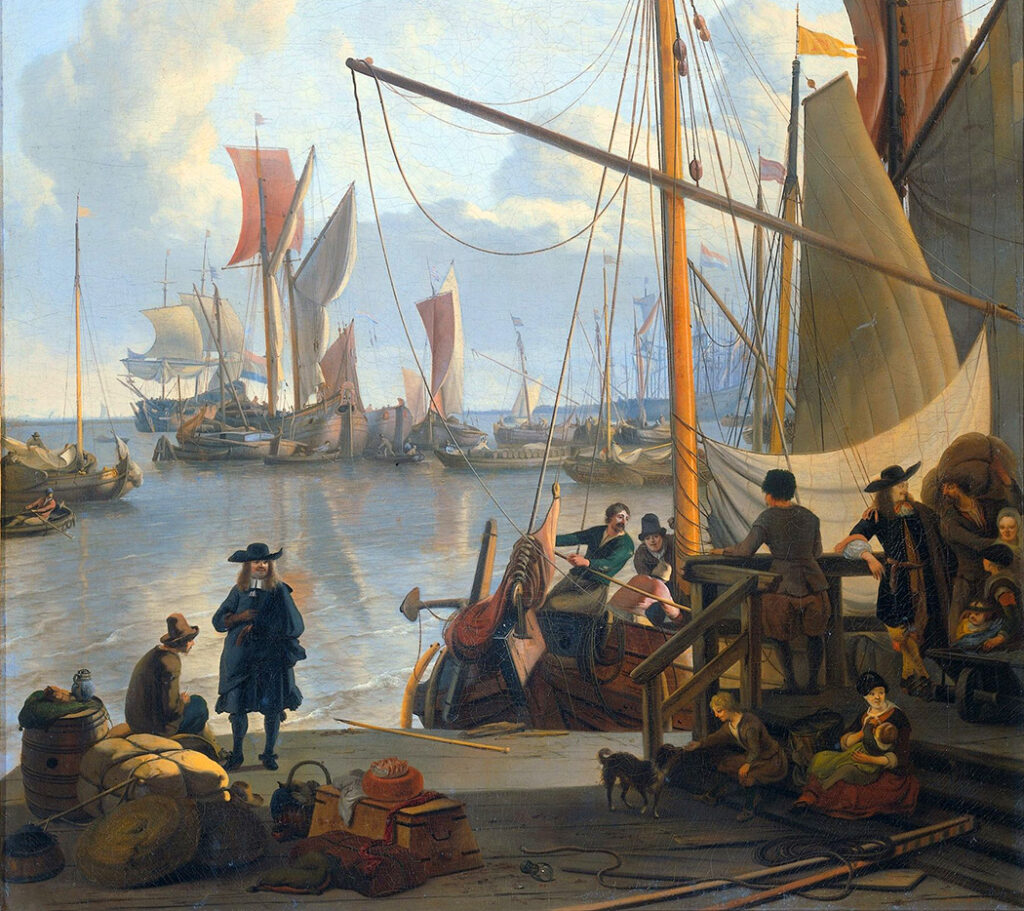Mary Dyer disembarked from the Woodhouse to find things much changed in Newport. There was new construction everywhere, including the mooring dock on which she stood. Word of their arrival electrified Newport Town, and before long Mary could see her husband striding towards her, trying his very best not to break into a run.

BTW, beyond the unfortunate stillbirth child, I haven’t mentioned the children of William and Mary Dyer. As Puritans were wont to do, the Dyers had a good number of them. I am assuming the children remained with friends or older siblings in Providence Plantations as their parents made their various trips, but I am unsure. Two things I can say for sure is one son was named Mahershallahashbaz (nicknamed Marshall for obvious reasons), and William Dyer, Jr. would become the Mayor of New York in 1680.
After hearing the story of Mary’s harrowing journey across the Atlantic, William Dyer would tell his wife of his promotion. He and Roger Williams had arrived from England in 1654 with the bad news for William Coddington that parliament had revoked his designation of Governor for Life. If you want to know how Coddington took this, there was a lawsuit filed by William Dyer against William Coddington for killing his prized mare.
New elections took place, and Roger Williams took Coddington’s seat as President of the Colony. The fishmonger turned milliner, William Dyer, was elected Attorney General!
How does a fishmonger become an Attorney General? Well, first he must make powerful friends. The Dyers had made one in Lord Henry Vane.
While in England, William Dyer failed to secure the official Rhode Island Parliamentary Patent he wished for. Instead, he was commissioned a naval officer by Henry Vane and the English Council of State in the recent war with the Dutch. Dyer would outfit a ship and become a privateer harassing the Dutch of New Amsterdam. His successes would see him raised to Commander in Chief Upon the Seas of New England.
Attorney General Dyer was quickly reintroduced to Christopher Holder by Mary. The Quaker missionary was then introduced to the wealthy Daniel Gould of Newport.
Daniel’s father Jeremy Gould (10th GGF) arrived in Boston around 1638 and quickly became a man of influence. In 1651 Daniel was wed to Waite Coggeshall, the daughter of Governor John Coggeshall (10GGF), the first President of the Rhode Island colony. Daniel’s mother Priscilla Gould would pass the next year, and father Jeremy would return to England in 1654 leaving his New England holdings to Daniel and his brothers.
Genealogical note: Daniel Gould and Waite Coggeshall are the 9th Great-grandparents of my wife, and it was through their Great-grandson James Gould III that her family would end up living in the Bahamas instead of Rhode Island. Gould’s business dealings would take him to the West Indies, and there James Gould III would meet Susannah Pinder, daughter of John Pinder, Esq. of Nassau, New Providence. They would marry on Christmas Eve of 1753 at Christ Church in Nassau, which is still there next to the Nassau Pirate Museum. Of course, the Pirate Museum was not there at that time, as far as I know.

Daniel Gould would become not only a supporter of the Friends, as Quakers called themselves, he would become a fervent missionary of their message. Eventually he would minister to Delaware, New Jersey, New York, Pennsylvania, and even Maryland.
The missionaries of the Woodhouse immediately set to work spreading the seeds of George Fox throughout the Providence Plantations, and they found the grounds fertile. The Friends they had earlier left in New Amsterdam arrived in Providence with a much different report.
The Dutch authorities arrested the Quakers and had them whipped. They found themselves banished, and if it were not for the kind lay people of New Amsterdam, the missionaries may not have escaped with their lives. Tragically, Friend Sarah Gibbons, who had survived the Atlantic crossing in the tiny Woodhouse and having been chased by a Dutch warship, died on arrival in Providence.
The colonists had become used to the sleek canoes of the Natives, and one was being used to tender the passengers of the Dutch vessel tasked with transporting the banished Quakers to Providence. As Sarah Gibbons struggled to seat herself in the unfamiliar canoe, the vessel capsized. Pulled under the brackish tidewater, poor Sarah drowned at the very doorstep of Providence.
To be continued in The Quakening, Part 5…